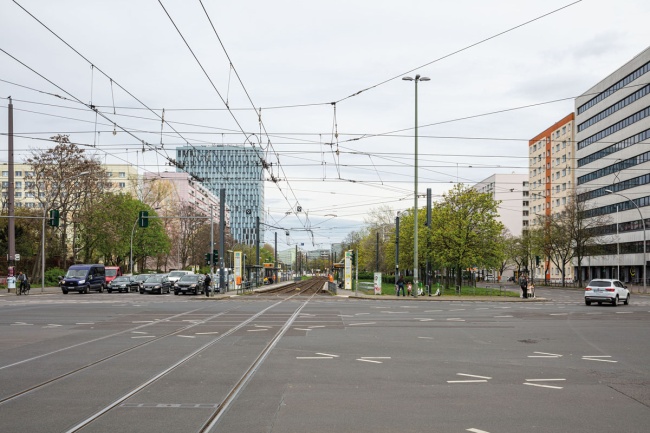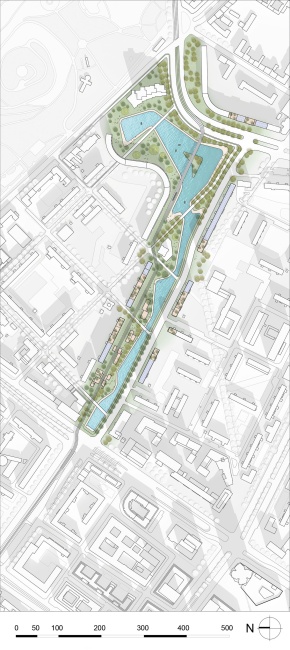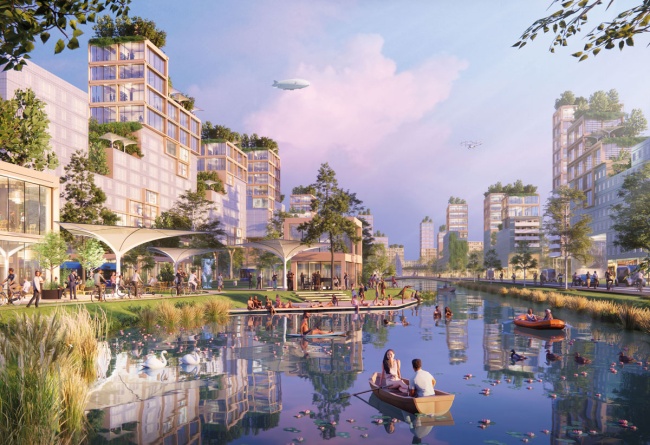Mitte: Mollstraße
GRAFT
Green and Blue for the City of Tomorrow
Residential areas and untraversable roads should not go hand in hand. The excessive space afforded to cars on Mollstrasse can be reorganised and reduced to expand existing green areas into verdant public spaces and to accommodate a new kilometre-long stretch of water. Supplementary buildings on a new scale allow numerous green roof surfaces. For the existing prefabricated buildings, more fragmentation, green loggia façades and private roof gardens are proposed. The lower two storeys of the prefabricated buildings will be divided up and supplemented with shops, service units and small offices to create a diverse and lively inner-city neighbourhood with high quality green space. This proposal for Mollstrasse illustrates our idea of the “liveable sponge city” designed for people and wildlife.

The existing street space
After the Second World War, the ideal of urban development was the open and green city. Prefabricated apartment blocks were a cost-effective solution to the housing shortage. However, the large-scale urban planning efforts of the 1960s also focussed on building major roads and expanding car-friendly infrastructure. Residential neighbourhoods like that along Mollstrasse have borne the brunt of this. The absence of the typical mixed Berlin neighbourhood has made it difficult to achieve any sense of urbanity.

Mollstrasse site plan
The main element of the design is a spacious park on United Nations Square with a large water feature reaching into Mollstrasse, made possible by redistributing the street´s profile. The existing open space in the north will be expanded into a park that extends into neighbouring districts. In the 1960s and 1970s, the notion of inhabiting green spaces became increasingly restricted due to rising traffic levels in the car-oriented city. But today we can once again imagine a verdant city life, by moderately restricting traffic in the area.
Mollstrasse visualisation – a day at the lake
New sections and additions to the large-scale buildings along Mollstrasse allow for the creation of green roof terraces and communal areas with fantastic views over Berlin’s city centre. Public spaces and additional pavilions on the ground floor bring the metropolitan environment back to the human scale. The result is symbiosis – between the dense city centre and the natural environment – for all to enjoy.


Von links nach rechts/From left to right:
Thomas Willemeit, Lars Krückeberg, Sven Fuchs, Wolfram Putz, Georg Schmidthals
© Christian Thomas, Berlin
The team
GRAFT was founded in Los Angeles in 1998 and is headquartered in Berlin. The studio works around the globe in the fields of urban development, architecture, design and communication and is characterised by its experimental, scenographic design practice and diverse formal languages.